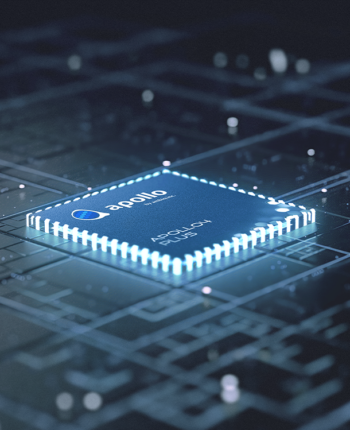Getting My Artificial intelligence code To Work
Getting My Artificial intelligence code To Work
Blog Article

Performing AI and object recognition to sort recyclables is complicated and will require an embedded chip capable of handling these features with large performance.
Weak spot: In this example, Sora fails to model the chair as a rigid item, bringing about inaccurate Actual physical interactions.
As explained during the IDC Viewpoint: The worth of the Encounter-Orchestrated Organization, the definition of the X-O business delivers shared knowledge benefit powered by intelligence. To compete within an AI in all places globe, electronic organizations ought to orchestrate a meaningful value exchange concerning the Business and their important stakeholders.
You’ll uncover libraries for speaking to sensors, managing SoC peripherals, and controlling power and memory configurations, coupled with tools for effortlessly debugging your model from your laptop computer or Laptop, and examples that tie it all collectively.
Deploying AI features on endpoint equipment is all about saving every final micro-joule whilst still meeting your latency specifications. This can be a sophisticated method which needs tuning several knobs, but neuralSPOT is listed here to aid.
Ambiq would be the market leader in ultra-reduced power semiconductor platforms and methods for battery-powered IoT endpoint products.
Generative models have several short-time period applications. But Eventually, they hold the opportunity to routinely discover the purely natural features of a dataset, whether or not types or dimensions or another thing completely.
Prompt: A white and orange tabby cat is viewed happily darting through a dense garden, just as if chasing anything. Its eyes are vast and pleased as it jogs ahead, scanning the branches, flowers, and leaves as it walks. The trail is slim as it would make its way in between each of the plants.
Other Gains incorporate an improved general performance across the general technique, decreased power spending plan, and diminished reliance on cloud processing.
We’re instructing AI to comprehend and simulate the Actual physical world in motion, Along with the goal of training models that support people today resolve troubles that have to have real-planet conversation.
The end result is always that TFLM is tricky to deterministically optimize for Electricity use, and those optimizations are usually brittle (seemingly inconsequential improve bring about significant Power effectiveness impacts).
You signed in with A further tab or window. Reload to refresh your session. You signed out in An additional tab or window. Reload to refresh your session. You switched accounts on One more tab or window. Reload to refresh your session.
You might have talked to an NLP model Should you have chatted by using a chatbot or had an automobile-suggestion when typing some electronic mail. Understanding and building human language is finished Cool wearable tech by magicians like conversational AI models. They can be digital language partners for you.
New IoT applications in a variety of industries are making tons of information, and also to extract actionable price from it, we will no more depend upon sending all the information back again to cloud servers.
Accelerating the Development of Optimized AI Features with Ambiq’s neuralSPOT
Ambiq’s neuralSPOT® is an open-source AI developer-focused SDK designed for our latest Apollo4 Plus system-on-chip (SoC) family. neuralSPOT provides an on-ramp to the rapid development of AI features for our customers’ AI applications and products. Included with neuralSPOT are Ambiq-optimized libraries, tools, and examples to help jumpstart AI-focused applications.
UNDERSTANDING NEURALSPOT VIA THE BASIC TENSORFLOW EXAMPLE
Often, the best way to ramp up on a new software library is through a comprehensive example – this is why neuralSPOt includes basic_tf_stub, an illustrative example that leverages many of neuralSPOT’s features.
In this article, we walk through the example block-by-block, using it as a guide to building AI features using neuralSPOT.
Ambiq's Vice President of Artificial Intelligence, Carlos Morales, went on CNBC Street Signs Asia to discuss the power consumption of AI and trends in endpoint devices.
Since 2010, Ambiq has been a leader in ultra-low power semiconductors that enable endpoint devices with more data-driven and AI-capable features while dropping the energy requirements up to 10X lower. They do this with the patented Subthreshold Power Optimized Technology (SPOT ®) platform.
Computer inferencing is complex, and for endpoint AI to become practical, these devices have to drop from megawatts of power to microwatts. This is where Ambiq has the power to change industries such as healthcare, agriculture, and Industrial IoT.
Ambiq Designs Low-Power for Next Gen Endpoint Devices
Ambiq’s VP of Architecture and Product Planning, Dan Cermak, joins the ipXchange team at CES to discuss how manufacturers can improve their products with ultra-low power. As technology becomes more sophisticated, energy consumption continues to grow. Here Dan outlines how Ambiq stays ahead of the curve by planning for energy requirements 5 years in advance.
Ambiq’s VP of Architecture and Product Planning at Embedded World 2024
Ambiq specializes in ultra-low-power SoC's designed to make intelligent battery-powered endpoint solutions a reality. These days, just about every endpoint device incorporates AI features, including anomaly detection, speech-driven user interfaces, audio event detection and classification, and health monitoring.
Ambiq's ultra low power, high-performance platforms are ideal for implementing this class of AI features, and we at Ambiq are dedicated to making implementation as easy as possible by offering open-source developer-centric toolkits, software libraries, and reference models to accelerate AI feature development.
NEURALSPOT - BECAUSE AI IS HARD ENOUGH
neuralSPOT is an AI developer-focused SDK in the true sense of the word: it includes everything you need to get your AI model onto Ambiq’s platform. You’ll find libraries for talking to sensors, managing SoC peripherals, and controlling power and memory configurations, along with tools for easily debugging your model from your laptop or PC, and examples that tie it all together.
Facebook | Linkedin | Twitter | YouTube